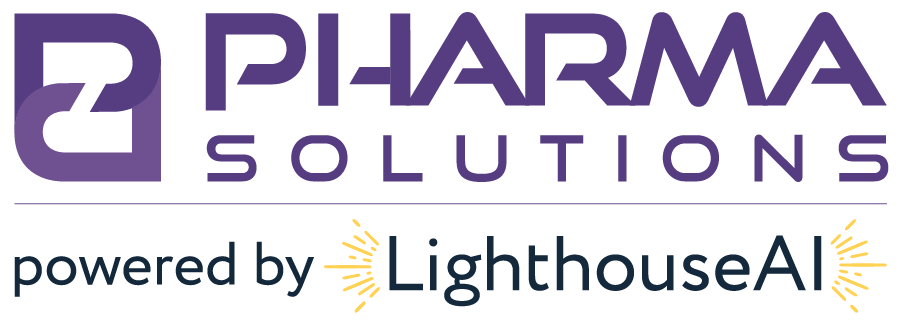How the Internet is Affecting Healthcare Retail: a Look at Pfizer’s Strategic Move
Sitting down with executives from two multi-national brand drug companies, with market capitalization’s of $200 billion and $7.5 billion, we got a sneak-peek on market pressures and future strategies.
Is Pfizer Selling Their Consumer Division for Cash Infusion, Lack of Promised Synergy, Changing Consumer Preferences, or an Amazon Threat?
Pfizer is again flirting with the idea of selling or spinning off its $15 billion OTC and consumer products healthcare. Pfizer has thought about the move a few times over the past year, reportedly in September 2016, November 2016, and now again in October 2017. This time, however, Pfizer seems ready to move forward with Reckitt Benckiser, Sanofi, Johnson & Johnson, Procter & Gamble, and GlaxoSmithKline allegedly submitting bids for the business.
Pfizer’s consumer healthcare products include:
-
Advil (ibuprofen), for pain and fever.
-
Centrum, a multivitamin.
-
ChapStick, a lip balm.
-
Dimetapp for the common cold.
-
Preparation H, a hemorrhoid cream.
-
Robitussin, for coughs and colds.
Cash Infusion: Leading Dealmakers
The simplest answer to why Pfizer is selling its Consumer Healthcare division is to free up cash for new acquisitions. This is an integral component for today’s Brand Drug Manufacturer.
Lack of Synergy: How Much OTCs and Pharmaceuticals Differ
OTC products are mostly consumer products with only a few aspects being similar to pharmaceuticals. Once the product is brought to market (granted FDA permission through NDA or Monograph) and labeling is addressed, the product functions exactly like a consumer product. Specifically, the branding, advertising, marketing, pricing, and retail/distribution channels for OTCs are very similar to traditional consumer retail products.
CASE STUDY, Pfizer’s Nexium: Pfizer announced theirq agreement with AstraZeneca for acquiring Nexium OTC rights in August 2012. Part of the agreement included that Pfizer would ultimately win FDA approval in March 2014. Per Pfizer, the adjusted Research & Guidance Expense increased by $250M. After the FDA approval and routine labeling process, Pfizer utilized its core competency in consumer products: branding, advertising, marketing, pricing, and retail/distribution channels.
The Power of Private-Labeling & the Move-Away from Traditional Brands
A possibility of Pfizer’s lackluster growth in their Consumer Healthcare division is the drastic change in consumer preferences and how consumers get what they want. There has been an explosion of natural, healthy, and authentic products all delivered right to your door dubbed “digitally native vertical brand,” (ie. $1B Dollar Shave Club, AmazonBasics, $310M Bonobos, $1B+ Warby Parker).
Private labeling in the pharmaceutical supply chain is still valuable. Harvard Drug Group received over a 2X multiple on revenue due to their Major and Rugby lines while past acquisitions of pharmaceutical distribution companies have usually earned less than a 1X multiple (over a $500 million premium!). Obviously, Cardinal still sees a lot of value in established businesses and volume, looking to leverage core competencies and capitalize on synergies.
CASE STUDY, Pfizer’s Nexium: Over-the-counter product manufacturers, unfortunately, must jockey for position. Continuing our case study, here are two products, one branded Nexium and the other not:
1. Branded Esomeprazole Magnesium 20mg 42-count at Walmart costs $23.68, or $0.57 per pill
2. Generic Esomeprazole Magnesium 20mg 42-count at Walmart costs $14.97, or $0.36 per pill
In this anecdotal case study, there is over a 50% upcharge for the “brand premium.” In the days of AmazonBasics, the advent of “AmazonRX distributed by Amazon, Inc.” is a matter of time, not when.
Is Pfizer and Patented Brand Drugs in General Protected in the Amazon Age?
The threat is ever-looming and it continues to creep closer in the healthcare industry: Amazon. It is possible that this move is risk-management as Amazon wins the hearts and minds of the American public.
It is important to note that patented brand drugs are mostly invincible while there are no other alternatives, whether by the expiration of patents or similar formulation. For example, a one-time dose of Yescarta by Gilead is listed at $373,000!
Gilead made news a few years ago with their ~$80,000 per month price for their Hepatitis C drugs. However, even with “close-but-not-quite” competitors, payers were able to push Sovaldi and Harvoni top-line sales down by 31%.
However, once off-patent, patented brand drugs face an onslaught of dropping prices and margins. Recently, Cigna took advantage of a thinly-veiled opportunity to reduce their drug costs by stopping their coverage of OxyContin altogether. Cigna states their reasoning was for reducing abuse, a win-win, given their immediate financial benefit. Purdue Pharma charges a premium for its branded OxyContin but lost patent-protection in early 2016.




0 Comments